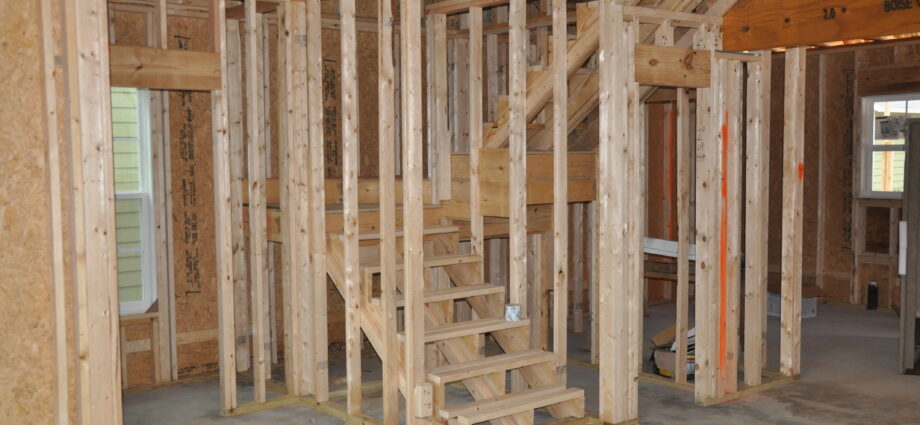
Kareman Yassin, Hitotsubashi University; Maya Papineau, Carleton University, and Nicholas Rivers, L’Université d’Ottawa/University of Ottawa
February 13, 2025
Canada has set an ambitious goal to reduce greenhouse gas emissions by 45 to 50 per cent below 2005 levels. This puts pressure on the residential and commercial building sector, which is responsible for about 18 per cent of national greenhouse gas emissions, to help meet this target.
Since most of Canada’s 16 million homes are expected to still be in use by 2050, the path to net-zero requires upgrading existing homes, not just constructing new net-zero ones.
To address this, retrofit programs that improve home energy efficiency have become one of Canada’s main strategies to cut emissions in the housing sector. These programs focus on upgrades like air sealing, enhanced insulation, upgrading heating and cooling systems and installing energy-efficient windows and doors.
But do these programs deliver on their promises of lower bills and reduced carbon emissions? Our recent study, forthcoming in Energy Economics, examined the outcomes of the federal ecoENERGY home retrofit program, a predecessor to the Greener Homes Initiative.
Our findings shed light on where the program succeeded, where it fell short and what this all means for Canadian families and policymakers moving forward.
Real-world energy savings
Our study analyzed a decade of monthly electricity and natural gas consumption data from Medicine Hat, Alta., where residents participated in the federal ecoENERGY retrofit program that was in place between 2008 to 2012.
We found that households undertaking comprehensive envelope retrofits — which includes insulation and air sealing — reduced their total energy use by an average of 25 per cent per household. Natural gas usage dropped by 35 per cent on average for these same households, and these savings lasted for at least 10 years after the retrofit.
This suggests that such retrofits hold promise for meaningful, long-lasting energy reductions, especially for home heating, which makes up a large part of residential energy use in Canada.
However, our study found that homes achieved only about 60 per cent of the predicted savings projected in pre-retrofit estimates. While measures like air sealing and attic and wall insulation were relatively effective, other upgrades, such as basement insulation and energy-efficient windows, showed zero effect on energy use.
This gap between projected and actual savings suggests that the estimates shown to households during pre-retrofit audits might be overestimating the benefits. This could leave families with lower-than-expected savings on their energy bills after making significant financial investments. These findings align with similar studies in the United States and Europe, where realized energy savings hover at around 60 per cent of pre-retrofit projections.
Despite this gap, there are promising opportunities for low-cost, high-return investments. Our research suggests that relatively cheap measures like air sealing generate high returns. Adopting electric heat pumps and fuel switching also show promise for delivering both energy savings and reductions in greenhouse gas emissions.
The need for broader participation
Our study also revealed significant gaps in program access and the distribution of benefits. Although the ecoENERGY program was available to all Canadian households, participation was highest among families of mid-valued houses.
Participation among families in lower-valued houses was disappointingly low: about four per cent of the families in lowest-valued houses took part, even though they stood to benefit the most from reduced energy bills. Homes in our study saw bill savings ranging from eight to 17 per cent, based on a comparison of their actual consumption before and after the retrofit. The highest savings were observed in homes with assessed values of $100,000.
Middle-valued homes with the highest retrofit program participant rate tended to save the least amount of money; this group had average gas bill reductions of approximately 10.5 per cent.
The maximum amount that could be claimed under the ecoENERGY program was $5,000, yet the average rebate received was $1,100. This disparity not only limited the program’s potential to reduce emissions on a large scale, but also means Canada’s current approach to energy retrofits may be missing an opportunity to improve energy affordability for those who need it most.
Room for improvement
Energy-saving retrofits have significant potential, but current prediction models often overestimate the savings homeowners can achieve. Improving these models could allow homeowners to make better-informed choices, leading to greater efficiency and improved household welfare.
Upfront costs also remain a significant barrier, particularly for lower-income families. Many cannot afford the upfront expenses associated with retrofitting their homes. Expanded financial support, such as rebates or no-interest loans, may provide much-needed support necessary to allow more households to participate, and more research is needed to evaluate how best to incentivize household participation.
Another major challenge is a lack of awareness. Many Canadians are unaware of the benefits of deep retrofits. Public awareness campaigns, possibly delivered in collaboration with community organizations, may also help educate homeowners on the long-term value of retrofits and make the process more accessible and appealing.
Our project is the first in Canada to use detailed household-level data to assess energy savings from retrofits in houses of various values. We were able to achieve this through partnerships between academia, utilities and the federal government. Such collaborations are crucial for advancing research that informs effective policies and programs.
As Canada advances toward net-zero emissions by 2050, energy-efficient housing should remain central to its climate strategy. Achieving sustainable progress in this area will require retrofit programs that deliver on their promises by enhancing household welfare, addressing energy affordability and ensuring continued public support.
Kareman Yassin, Assistant Professor, Hitotsubashi University; Maya Papineau, Associate Professor of Economics, Carleton University, and Nicholas Rivers, Canada Research Chair in Climate and Energy Policy, L’Université d’Ottawa/University of Ottawa
Subscribe to our newsletter.
This article is republished from The Conversation under a Creative Commons license. Read the original article.

